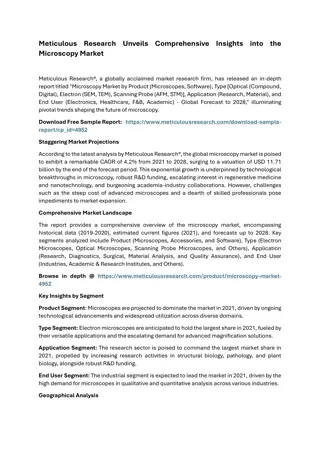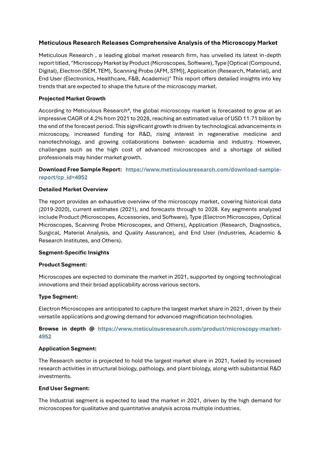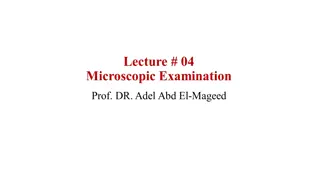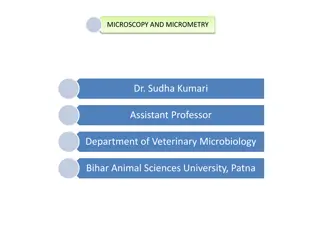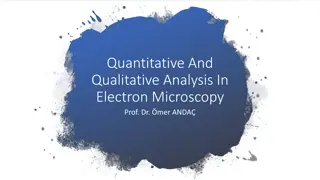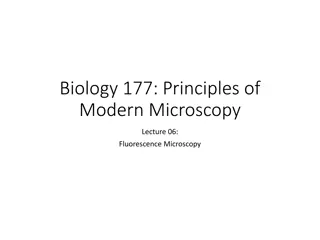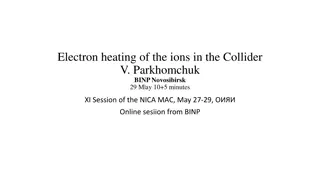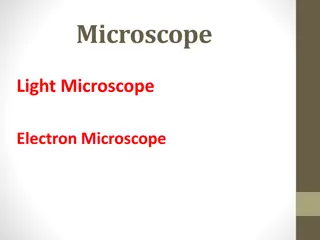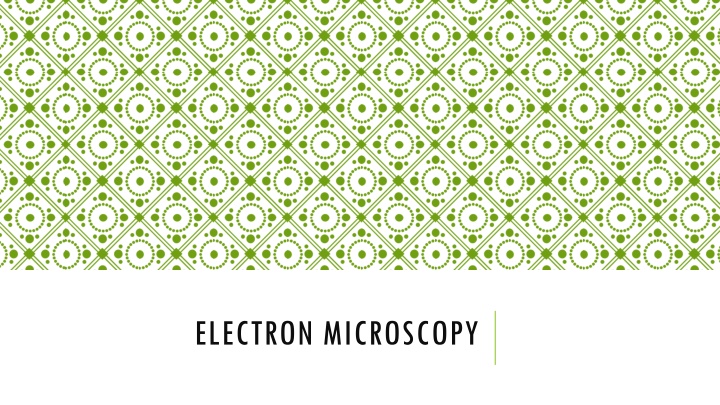
Electron Microscopy and Microscopic Imaging Techniques
Explore the world of electron microscopy, magnification, resolution, and the electromagnetic spectrum. Learn how electron microscopes surpass the limitations of light microscopes and delve into the fundamentals of microscopic imaging. Discover the electromagnetic spectrum and its significance in scientific exploration.
Download Presentation

Please find below an Image/Link to download the presentation.
The content on the website is provided AS IS for your information and personal use only. It may not be sold, licensed, or shared on other websites without obtaining consent from the author. If you encounter any issues during the download, it is possible that the publisher has removed the file from their server.
You are allowed to download the files provided on this website for personal or commercial use, subject to the condition that they are used lawfully. All files are the property of their respective owners.
The content on the website is provided AS IS for your information and personal use only. It may not be sold, licensed, or shared on other websites without obtaining consent from the author.
E N D
Presentation Transcript
THE BASICS Light microscopes are limited in that some objects are too small to be viewed with even the most advanced light microscopes. This is due to the nature of light & its ability to aid in magnification and resolution of objects.
MAGNIFICATION Magnification: how many times larger an object is than its real life size. Equation: M=I/A M=magnification I=observed size of image A=actual size
TRY IT OUT 1) The measured actual length of a cell is 80 m 2) You measure that cell under magnification and find that it is about 60 mm 3) Convert mm to m 4) Now calculate the magnification Answer: 750 (x750)
RESOLUTION Resolution=the ability to distinguish between two separate points If two points cannot be resolved or distinguished, they will appear as one point in micrograph Light micrograph/photomicrograph=a photograph taken with a light microscope Electron micrograph=a picture taken with an electron microscope Light microscopes have a maximum resolution of 200nm. Objects closer that 200nm will appear to be one object Increasing magnification with the same resolution does not result in seeing more details. It can often result in a blurry image if the magnification exceeds the resolution
ELECTROMAGNETIC SPECTRUM For those who took physics, remember that light travels in waves. Those waves have different lengths (hence wavelengths ). The human eye interprets different wavelengths as different colours Visible light spectrum= 400 nm (violet) to 700 nm (red) Electromagnetic spectrum=all wavelengths Longer waves have lower frequencies; shorter waves have higher frequencies More energy will result in shorter wavelengths/higher frequencies
ELECTROMAGNETIC SPECTRUM & MICROSCOPY Wavelength relates to microscopy because we see things that interrupt wavelengths. Mitochondria are large enough to disrupt microscope wavelengths but ribosomes are not The limit of resolution is about half of the wavelength The shortest wavelength of visible light is 400nm, so the best resolution for a light microscope is 200 nm. This correlates to a maximum magnification of 1500x Ribosomes are about 24 nm in diameter while one mitochondria is about 1000 nm
ELECTRON MICROSCOPES Biologists needed a different way to view objects smaller than 200nm Early ideas: UV rays & Xray; problem: can be hard to focus, especially Xrays Success: free electrons Recall from chemistry that electrons typically rotate/orbit around an atom. Heating metals can cause some electrons to break off their atoms. Free electrons move in very short wavelengths, similar to electromagnetic radiation Adding more energy will shorter the wavelengths further Pros of using electrons: Extremely short wavelengths The negative charges and are easily focused using electromagnets Resolutions as low as 0.5 nm
TEM Transmission Electron Microscope Works by beaming electrons through a specimen before it is viewed. Electrons that pass through or are transmitted are seen This method results in seeing thin sections of specimens, like the inside of a cell Has a lower resolution than an SEM
SEM Scanning Electron Microscope Electrons scan the surface of the object. The reflected beam is observed. Images show a great depth of field on the surface of the object. SEM microscopes have a resolution of 3 nm 20 nm, so some objects than may be visible with a TEM are not visible with this method
HOW TO USE AN ELECTRON MICROSCOPE A fluorescent screen makes electron beams visible, resulting in a black & white image Stains used for this type of microscopy will contain heavy metal atoms to stop the passage of electron beams. False-colour images are made by adding color using a computer. This type of microscopy only works in a vacuum, meaning only dead specimens can be viewed. Why? Air molecules would collide with electron beams Specimens must also be dehydrated Why? Water will boil at room temperature in a vacuum




